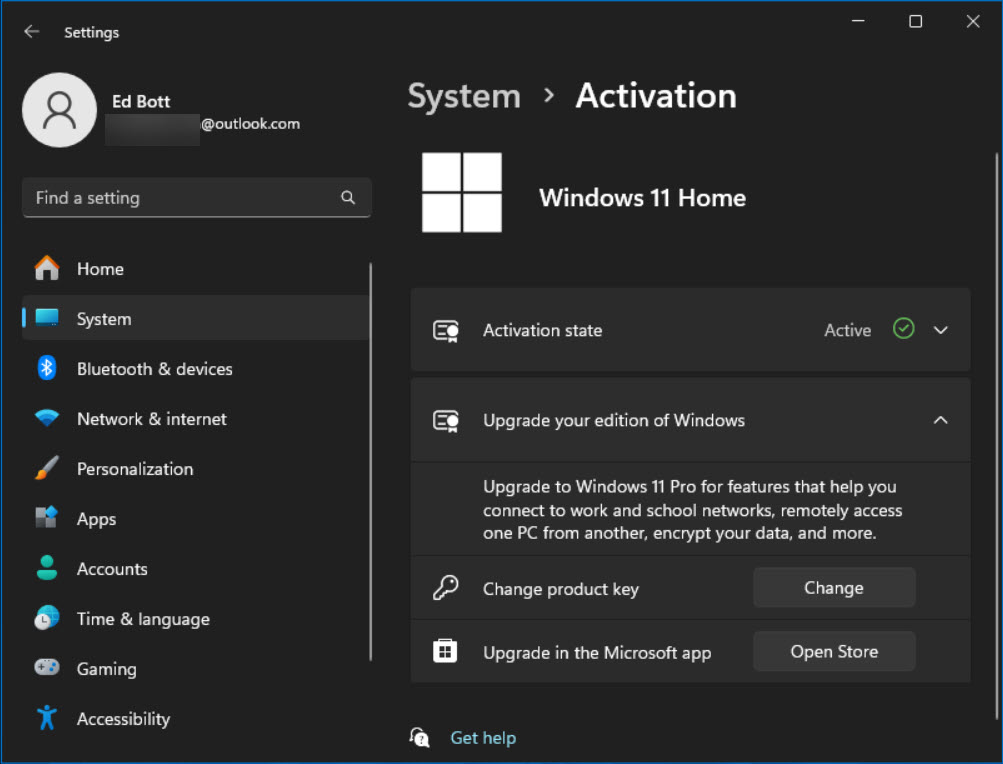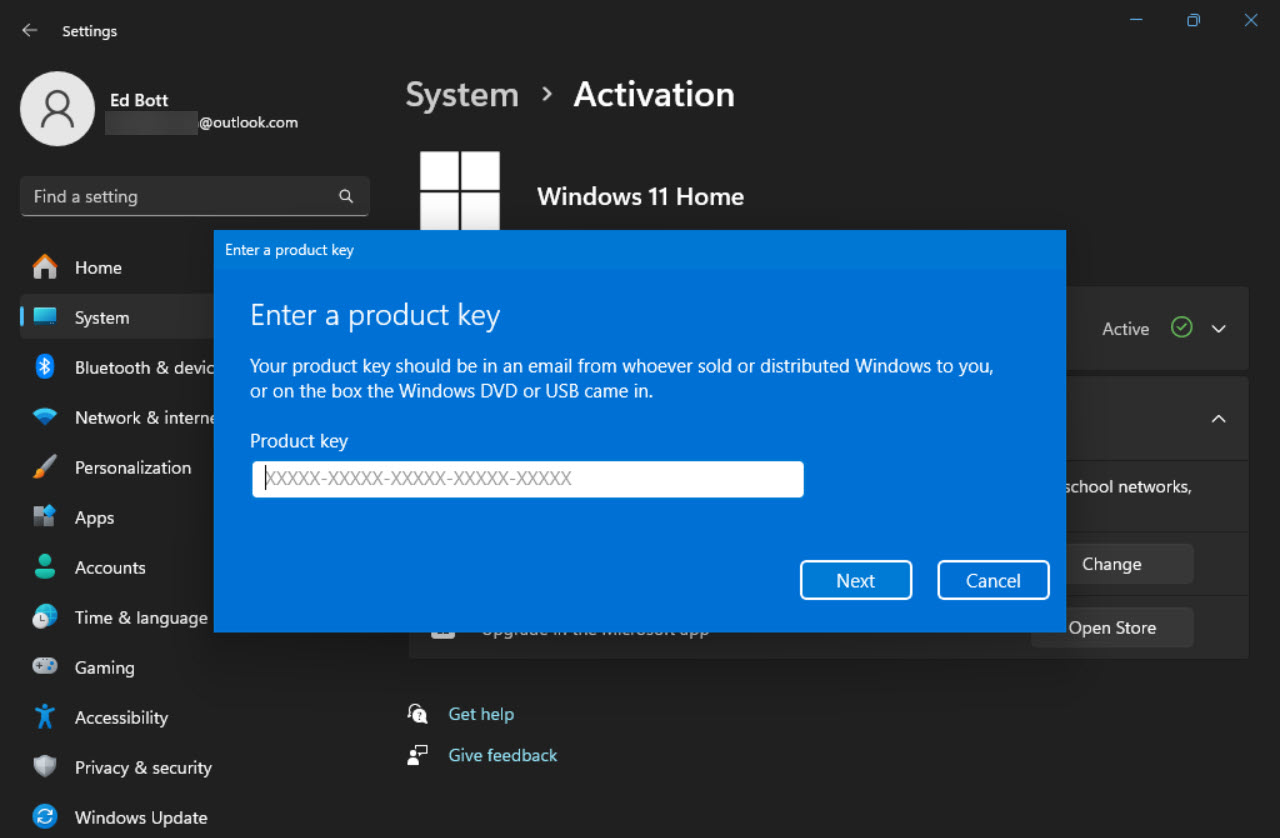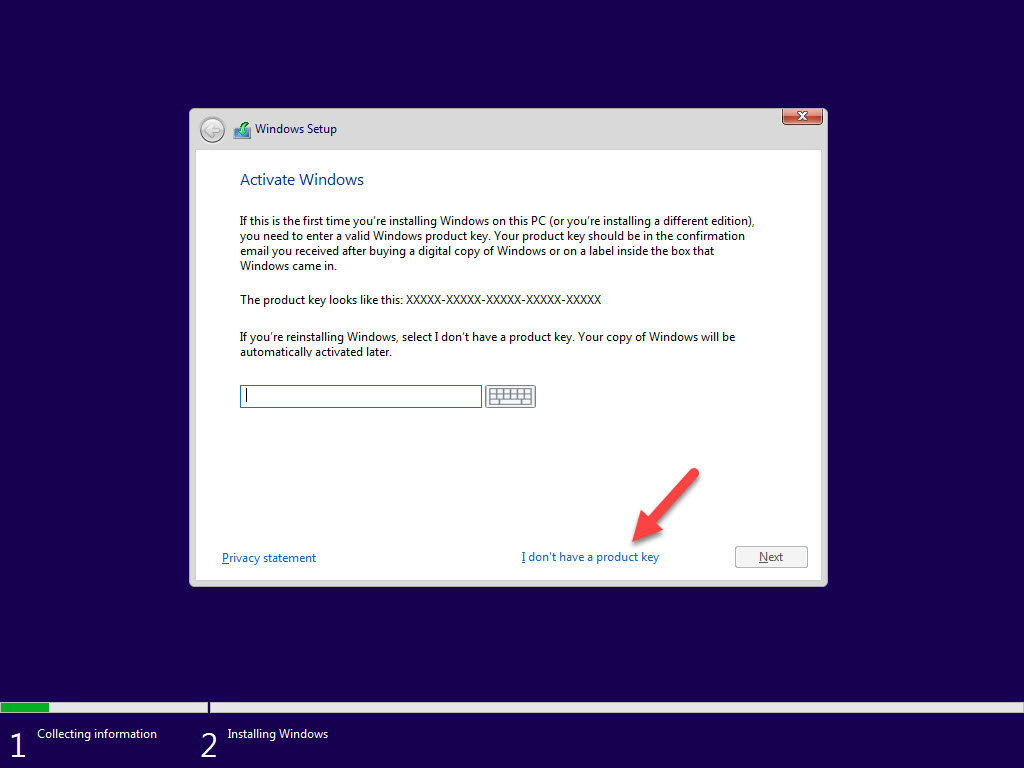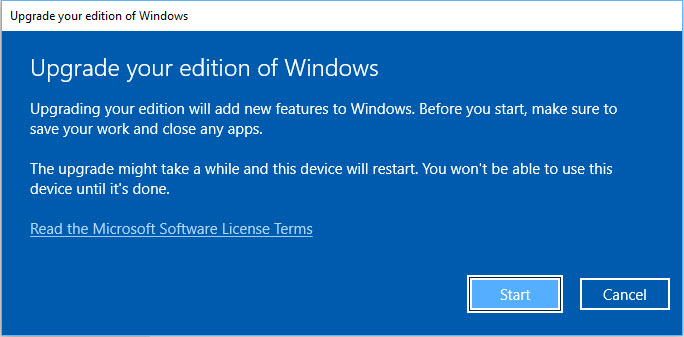Screenshot by Ed Bott/ZDNET.
If you bought a new PC with Windows 11 Home preinstalled, prepare to be disillusioned. This low-end edition (which might as well be called “Windows for cheapskates”) doesn’t offer any of the features needed to work well.
So, to optimize your computer, here are the steps to install Windows 11 Professional. The first step of this practical guide is common. Next, follow the steps corresponding to your situation.
Step 1: Obtain a license key
While it was once possible to reuse a license key from Windows 7 Professional, Windows 7 Ultimate or Windows 8/8.1 Pro to move from Windows 10 Home to Windows 10 Professional, this trick no longer works since Microsoft ended its free Windows 10 upgrade program. So, to be able to install Windows 11 Professional to replace your home version, you will need a license key for Windows 10 or Windows 11 Pro. Keys for Windows 10 can indeed be used with Windows 11 – and vice versa.
If you have already purchased Windows 10 Pro and installed it on your old PC, which no longer works, you can reuse the license key. On the other hand, if your old PC had a pre-installed OEM version of Windows, it is not transferable. In this case, you will need to purchase a license key for Windows.
You can purchase Windows 11 Pro directly from Microsoft, for 259 euros, or pick up a copy for a reduced price on other sites. However, be careful of the “gray market”, which of course carries risks.
You can also decide to do without the license key to install Windows 11 directly on your PC from the Microsoft Store For 199 euros. Be careful though: in this case, the license you purchase will be forever linked to the computer on which you install it, and cannot be transferred to another device. You will only be able to use the key once: once the upgrade is complete, the Windows 10/11 Pro digital license will be linked to your PC and will allow you to reinstall this version at any time, on this hardware only, without needing the key.
Scenario 1: You have just purchased a new PC
This applies if your new PC was sold with Windows 11 Home preinstalled, or if you upgraded to Windows 10 or Windows 11 for free when your PC originally had the Home version of Windows 7 or Windows 8 /8.1. In both cases, the upgrade only takes a few minutes.
Step 2: go to settings
If you have Windows 11, go to Settings > System > Activation. In Windows 10, go to Settings > Update & Security > Activation.

Screenshot by Ed Bott/ZDNET.
Step 3: Enter the product key
Click the arrow to the right of Upgrade your Windows edition to expand this section. Click on Change Product Key and enter the 25 characters that constitute it.
You can also directly click on Open the blind to purchase a license from the Microsoft Store at a slightly reduced price (see conditions in step 1).

Screenshot by Ed Bott/ZDNET.
Step 4: install the update
After entering the product key, follow the instructions to update.
You will see a succession of progress screens and your system will reboot. Once the update is complete, Windows should notify you that the installation was successful. Go to Settings > System > Activation to verify that your version of Windows 11 Professional is activated.
Scenario 2: You want to reinstall Windows 10/11 Professional on your PC
If you have already upgraded Windows from Home to Professional, you no longer need the product key. You now have a digital license linked to your material. So when you reinstall Windows, Microsoft’s activation servers recognize your PC and activate Windows automatically. Here’s how to do it.
Step 2: Boot from a bootable USB drive
To install a clean copy of Windows on a PC that already has a digital license for Windows 10/11 Pro, you need to boot from a USB drive that contains the Windows installation files. When prompted to enter your product key, select I don’t have a product key.

Screenshot by Ed Bott/ZDNET.
Step 3: install Windows Professional
When prompted to choose which version of Windows to install, select Windows 10 Pro or Windows 11 Pro. Warning: do not choose a version whose name ends with the letter N, and do not choose Windows Professional for Workstations.
Follow the instructions to complete the installation, then log in to your new OS.
Step 4: Check that your version of Windows is activated
Once the installation is complete, go to Settings > System > Activation to verify that Windows Professional is activated. If you haven’t made any major hardware changes, Microsoft’s servers will recognize your device and you should see a note that the system is activated with a digital license. If you find that the reinstallation did not work correctly, click Acquire help to try to resolve the problem.
Scenario 3: You want to restore Windows 10/11 Professional after formatting
As in the previous scenario, you want to restore Windows 10/11 Pro, but your PC was originally equipped with Windows 10/11 Home. In this case, you may restore the original home version. If this happens to you, don’t look for the product key you used for the upgrade: use the generic Microsoft product key to force the upgrade.
Step 2: go to settings
If you have Windows 11, go to Settings > System > Activation. In Windows 10, go to Settings > Update & Security > Activation. Open the section Upgrade Windowsif necessary, and select Change Product Key.
Step 3: Enter the Generic Product Key
Enter the following product key:
VK7JG-NPHTM-C97JM-9MPGT-3V66TPlease note: this generic product key is not magic. If your device does not already have a Windows Pro license, you will get an activation error and will need to provide an appropriate product key or pay for an upgrade.
Step 4: Complete the update
Follow the instructions and restart your computer to complete the update.
Since you have already upgraded your PC to Windows Professional, Microsoft’s activation servers should recognize the digital license and activate the new version of Windows.
Frequently Asked Questions
What is the difference between Windows Home and Windows Professional?
Operating system security remains the main difference between the Windows Home and Professional versions. Windows Professional is of course the best choice to ensure that the data on a device is best secured and protected.
In addition, Windows Professional also has the following features: Join a computer to a domain, Hyper-V, BitLocker, Windows Update for Business, Remote Desktop Services and AssignedAccess. You will find more information on each of these features on the Microsoft website (by clicking on the links in this article).
Do I really need Windows 11 Pro?
It depends on your uses. If you need to encrypt all your files and disks using BitLocker, or schedule or defer monthly updates, Windows Professional will come in handy. On the other hand, if you use your PC for simple office tasks or to browse the Internet, Windows Home may be enough for you. However, sign in with your Microsoft account to make sure your system drive is encrypted.
What is a clean install?
A clean install removes previously installed software and installs a new copy with default settings.
Source: ZDNet.com
